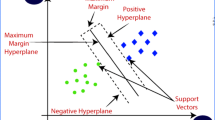Abstract
This paper presents a new crypto domain data hiding technique based on Intermediate Significant Bit Plane Embedding (ISBPE). The cover image is encrypted; the information to be secured is scrambled, and then embedded in the Intermediate Significant Bit (ISB) planes of encrypted cover image, at the locations determined by a Pseudorandom Address Vector (PAV). The pseudorandom embedding of the scrambled data in the ISB planes of encrypted image results in a three tier security of the data to be secured. The ISBPE embedding results in an important advantage that the proposed scheme becomes completely robust to commonly employed attack of Least Significant Bit (LSB) removal/replacement. A novel concept of embedding a very small size fragile watermark in addition to the secret information has been used which facilitates early tamper detection. This feature could save crucial processor time in critical situations of national security issues/warfare etc. Experimental results show that the proposed scheme is more robust to various signal processing attacks like Joint Picture Expert Group compression, Additive White Gaussian Noise and ‘salt and pepper’ noise as compared to conventional LSB based embedding techniques. Comparison results with some well-known techniques show that besides providing high degree of security and robustness to various malicious attacks the proposed technique is capable of embedding a fairly large amount of secret data in the host image while maintaining a good stego-image quality.














Similar content being viewed by others
References
Abdulmahdi, N. H., Yahya, A., Ahmad, R. B., & Al-Qershi, O. M. (2010). Secured and robust information hiding scheme. Procedia Engineering, 53, 463–471.
Azarderakhsh, R., Jarvinen, K. U., & Mozaffari, K. M. (2014). Efficient algorithm and architecture for elliptic curve cryptography for extremely constrained secure applications. IEEE Transactions on Circuits and Systems, 1(61), 1144–1155.
Bhat, G. M., Mustafa, M., Parah, S. A., & Sheikh, J. A. (2010). FPGA implementation of novel complex PN code generator based data scrambler and descrambler. Maejo International Journal of Science and Technology, 4, 125–135.
Chan, C. K., & Cheng, L. M. (2004). Hiding data in images by simple LSB substitution. Pattern Recognition, 37, 469–474.
Chang, C. I., Hu, C. Y., Chen, L. W., & Lu, C. C. (2015). High capacity reversible data hiding scheme based on residual histogram shifting for block truncation coding. Signal Processing, 108, 376–388.
Fridrich, J., Goljan, M., & Soukal, D. (2003). Higher-order statistical steganalysis of palette images. Proceedings of the SPIE Security Watermarking Multimedia Contents, 5020, 178–190.
Ker, A. (2005). Steganalysis of LSB matching in grayscale images. IEEE Signal Processing Letters, 12, 441–444.
Kim, H. J., Sachnev, V., Shi, Y. Q., Nam, J., & Choo, H. G. (2008). A novel difference expansion transform for reversible data hiding. IEEE Transactions on Information Forensics and Security, 3, 456–465.
Lu, S. (2005). Multimedia security: Stegnography and digital watermarking techniques for protection of intellectual property. Hershey: Idea Group Publishing.
Mielikainen, J. (2006). LSB matching revisited. IEEE Signal Processing Letters, 3, 285–287.
Miller, M. L., Doerr, G. J., & Cox, I. J. (2004). Applying informed coding and embedding to design a robust, high capacity watermark. IEEE Transactions on Image Processing, 13, 792–807.
Mustafa, S. A. K., & KokSheik, W. (2014). Universal data embedding in encrypted domain. Signal Processing, 94, 174–182.
Parah, S. A., Sheikh, J. A., & Bhat, G. M. (2012). Data hiding in intermediate significant bit planes: A high capacity blind steganographic technique. In Proceedings of IEEE international conference of INCOSET-2012, Thiruchirappali, India. 192–197.
Parah, S. A., Sheikh, J. A., Hafiz, M., & Bhat, G. M. (2015). A secure and robust information hiding technique for covert communication. International Journal of Electronics, 102, 1253–1266.
Rajput, A. S., Mishra, N., & Sharma, S. (2013). Towards the growth of image encryption and authentication schemes. In International conference on advances in computing, communications and informatics (ICACCI), 454–459.
Ramos, B., Blasco, J., Castro, J. C. H., & Fuentes, J. M. (2012). A framework for avoiding steganography usage over HTTP. Journal of Network and Computer Applications, 35, 491–501.
Schyndel, R. G., Tirkel, A. Z., & Osborne, C. F. (1994). A digital watermarking. Proceedings of the IEEE International Conference on Image Processing., 2, 86–90.
Solak, E. (2013). Passion of chaotic cryptography. In Signal processing and communications applications conference (SIU). IEEE Conference Publication, 1–3.
Wang, R. Z., Lin, C. F., & Lin, J. C. (2001). Image hiding by optimal LSB substitution and genetic algorithm. Pattern Recognition, 34, 671–683.
Wu, N. I., & Hwang, M. S. (2007). Data hiding: Current status and key issues. International Journal of Network Security, 4, 1–9.
Xinlu, G., Xiaolong, L., & Bin, Y. (2014). A high capacity reversible data hiding scheme based on generalized prediction-error expansion and adaptive embedding. Signal Processing, 98, 370–380.
Xinpeng, Z., Zhenxing, Q., Guorui, F., & Yanli, R. (2014). Efficient reversible data hiding in encrypted images. Journal of Visual Communication and Image Representation, 25, 322–328.
Xu, H., Wang, J., & Kim, H. J. (2010). Near-optimal solution to pair-wise LSB matching via an immune programming strategy. Information Sciences, 180, 1201–1217.
Zeki, M. A., Manaf, A. A., & Mohmad, S. S. (2011). High watermarking capacity based on spatial domain technique. Information Technology Journal, 10, 1367–1373.
Author information
Authors and Affiliations
Corresponding author
Rights and permissions
About this article
Cite this article
Parah, S.A., Sheikh, J.A., Assad, U.I. et al. Hiding in encrypted images: a three tier security data hiding technique. Multidim Syst Sign Process 28, 549–572 (2017). https://doi.org/10.1007/s11045-015-0358-z
Received:
Revised:
Accepted:
Published:
Issue Date:
DOI: https://doi.org/10.1007/s11045-015-0358-z




